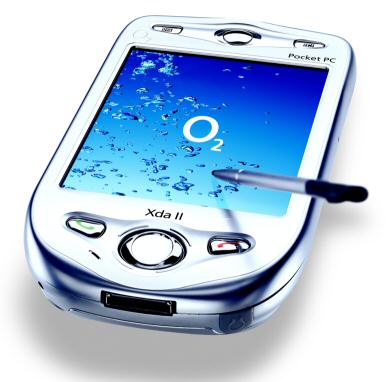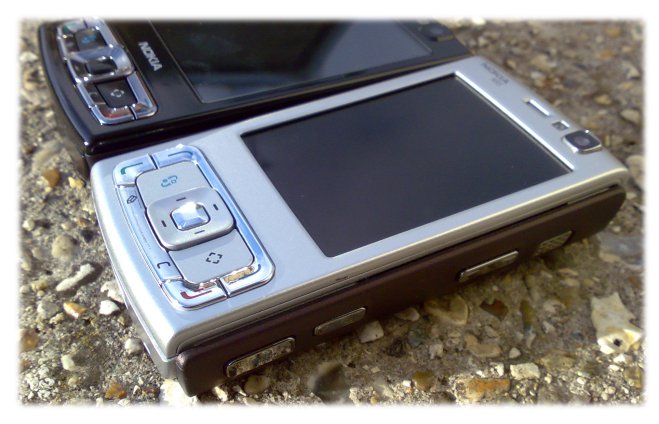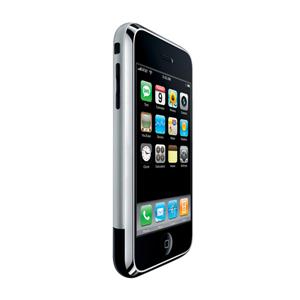 It's true that I have a lot of smartphones passing through my office, from 2000 (the Ericsson R380) to the latest Nokia 808 PureView (May 2012). In all shapes and sizes. And running around six different software platforms. So I'm well placed to comment on which device does what and to draw comparisons and summaries. And it occurs to me that, completely regardless of manufacturer or OS, almost any device after a particular point in mobile history could be used day to day as my main smartphone. It's true that the experience might not be as smooth or seamless as on some of today's phones, but the functionality was all there.... five years ago.
It's true that I have a lot of smartphones passing through my office, from 2000 (the Ericsson R380) to the latest Nokia 808 PureView (May 2012). In all shapes and sizes. And running around six different software platforms. So I'm well placed to comment on which device does what and to draw comparisons and summaries. And it occurs to me that, completely regardless of manufacturer or OS, almost any device after a particular point in mobile history could be used day to day as my main smartphone. It's true that the experience might not be as smooth or seamless as on some of today's phones, but the functionality was all there.... five years ago.
Pre-2007
Yes, 2007 was the cut off point. Until 2007, we'd had large screen PDAs with tacked on telephony (why the heck didn't the O2 XDA [shown left] - made by HTC back in 2002 and powered by Windows Mobile, the predecessor to Windows Phone - take over the world and become the first mass market smartphone?), we'd had also-large-screened clamshell communicators (e.g. Nokia 9210 and 9500), we'd had the front-qwerty Palm Treos, a smattering of Symbian UIQ touchscreen phones and a rising swell of d-pad driven small-screened 'Series 60' Nokia phones that kept adding more and more functions, coming in very much from the classic 'cell phone' direction.
But whatever the redeeming features of any of these (and, trust me, I owned all of them back in the day), none could do everything. By which I mean all the standard, expected functions and features that we take for granted these days:
- Wi-fi
- GPS plus mapping software
- Camera good enough to replace a standalone for most purposes
- Camcorder good enough for its output to be viewed on a domestic TV
- High quality stereo music output
- Sensors, including accelerometers
- Access to up to 32GB of storage
The watershed year
Up until 2007, it simply wasn't possible, seemingly, to get all these staples into the one device. There would be one model with a good camera, but not Wi-fi and no GPS. Another phone would have Wi-fi and a rubbish camera. Another would be good at music. And so on.
 But everything changed with the arrival of the Nokia N95*, into which Nokia put the kitchen sink - every tech feature it could possibly cram in was included. The result was a headache for the company at first, since there were inevitable teething troubles, but the concept was good and, after a few firmware updates, the N95 sold in the tens of millions, as did its bigger and more powerful successor, the N95 8GB.
But everything changed with the arrival of the Nokia N95*, into which Nokia put the kitchen sink - every tech feature it could possibly cram in was included. The result was a headache for the company at first, since there were inevitable teething troubles, but the concept was good and, after a few firmware updates, the N95 sold in the tens of millions, as did its bigger and more powerful successor, the N95 8GB.
* Yes, I know the N95 was -announced- in 2006, but it didn't appear in the shops until 2007...
I can, in truth, pull out my N95 today, sync on all my PIM data and that from various applications, and use it in exactly the same way I use any other 2012 smartphone. Look past the now small 2.6" QVGA screen and restricting RAM, this relatively small device was the first phone of the modern age and can be used today (in knowledgeable hands) without any massive restrictions. You may remember we recently reported on Alvin Wong's attempt to use the N86 as his main smartphone? In his case the experiment was cut short because he basically broke the phone, but he'd be the first to admit that he was still fully functional on the older device.
Yes, 2007 was definitely the year. For another reason, too.
You see, while the N95 could (and still can) do just about everything required of a smartphone in 2012, five years on, the experience for the user, in terms of:
- the amount of information presented at once
- the speed of the interface
- the number of button clicks needed to do things
- the size of the learning curve needed
 ...was somewhat lacking. And this is where the Apple iPhone stepped in, famously, in the same year. The idea was to present an interface that anyone could use, with no menus to learn, few settings to tweak and which required less intelligence in the user by putting more intelligence in the software.
...was somewhat lacking. And this is where the Apple iPhone stepped in, famously, in the same year. The idea was to present an interface that anyone could use, with no menus to learn, few settings to tweak and which required less intelligence in the user by putting more intelligence in the software.
And, of course, was a great success, with its successors outselling the N95 and its followup devices by a long way. It's true that the first iPhone was little more than a feature phone in terms of functions, with no GPS and a terrible camera, but Apple kept iterating on the idea and adding in all the stuff the N95 had, to the point where, from the iPhone 4 onwards, it ticked all the boxes from my first list above as well.
In the meantime, Nokia and Symbian had (with a number of misteps, it's true) been working on adding improvements from my second list to add to the core convergence in their earlier devices. And following both Nokia's and Apple's lead, every other manufacturer and smartphone OS designer has been trying to build everything from both lists into every top end device.
No further revolution?
The upshot of all of which is that we're completely, utterly spoilt for choice.
Prior to 2007, I would be eagerly anticipating the release of the next big handset - "This is the one that gives me Wi-fi for the first time!" or "Wow, stereo music for the first time, I can retire my Walkman!", and so on. Every device brought something genuinely new to the table and changed the 'game' in a tangible way.
I would argue that, since the appearance of the N95 and iPhone in 2007, there has been little that's actually new. We've seen screens go up in terms of resolution and size, processors get faster (and more numerous!), GPUs get more powerful, cellular data speeds increase, RAM and storage memory increase, all substantial but 'evolutionary' rather than 'revolutionary'.
Even tech additions like USB on the Go, DLNA and NFC don't really count, since adoption of the technology itself isn't totally mainstream yet.
So, spoilt for choice, I have 20 handsets in front of me (lucky journalist/geek/early adopter that I am, though I daresay you have a drawer with a few devices too?) all from 2007 or later and all of them, repeat ALL of them can function as my day to day smartphone with only relatively minor compromises on my part. I find this amazing, given the changes happening between 2000 and 2007.

A few smartphones of varying vintages and OS platforms - spoilt for choice indeed, since their core functions overlap to around 99%! From left to right: Nokia E72, Nokia Lumia 800, Nokia E7, Apple iPhone 3G, HTC 7 Pro, Samsung Galaxy Nexus, Blackberry Bold 9900
No longer do new smartphones bring something ground-breaking, something that completely takes your breath away. Yes, newer devices are generally better, in terms of:
- specs (e.g. HTC One X)
- experience (e.g. the latest Windows Phones, like the Lumia 800)
- intelligence (e.g. the Galaxy S III, with its various sensor-based functions)
- refinement (e.g. the PureView camera in the Nokia 808 PureView)
...but at heart there's little that's actually new in terms of raw functionality.
So the next time you feel yourself starting to get annoyed that your current smartphone isn't quite up with the cutting edge, the next time you get jealous of the next device's extra processor or extra half inch of display size, just take a moment and realise that these are all, at the end of the day, just post-2007 smartphones, and that they all, for the most part, can do exactly the same job for you.
Remember, if this was even ten years ago, you'd still be looking forward to a phone with a basic camera or even wi-fi, to name but two staples of the modern age.
Looking around at the mobile options available to us in 2012, we really are spoilt for choice.
Steve Litchfield, All About Symbian and All About Windows Phone, 21 May 2012
